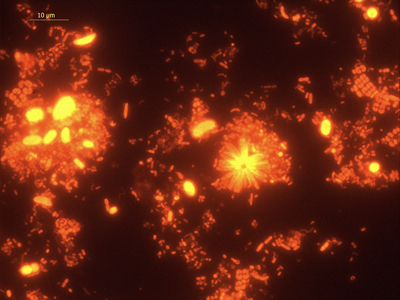One of the biggest challenges in making biofuels cost-effective is finding alternative methods for breaking down biomass, and particularly, materials such as lignocellulose that provide rigidity and structure to the plant cell walls. To find these alternative methods, many researchers are turning to natural refineries such as the cow rumen or forestomach to learn more about the microbes and enzymes that break down and ferment the plant material these ruminants eat.
The forestomach of the cow is estimated to contain 3,000 bacterial species and is considered one of the most effective microbiomes or microbial communities that specializes in breaking down biomass. Because microbial communities inside a cow rumen can vary depending on the feed, researchers are particularly interested in learning more about the microbial communities that would be found in cows that subsist on fresh forage, and how these might differ from the microbial communities found in cows who eat grain or hay. The differences in diet not only provide more information about the diversity of microbes found inside a cow rumen, but could also provide researchers with information about the enzymes involved in breaking down the biomass ingested by the cow and also lend insight into how methane produced by cows and other ruminants might be reduced to reduce emission levels of this greenhouse gas. After sequencing the microbial communities found in the cow rumen samples, researchers also hope to determine the functions of the genes and identify potential applications for the information not just in biofuel production but also in other fields such as agriculture.

Photo: Gemma Henderson, AgResearch
Principal Investigators: Christina Moon and Graeme Attwood, AgResearch Limited
Program: CSP 2010